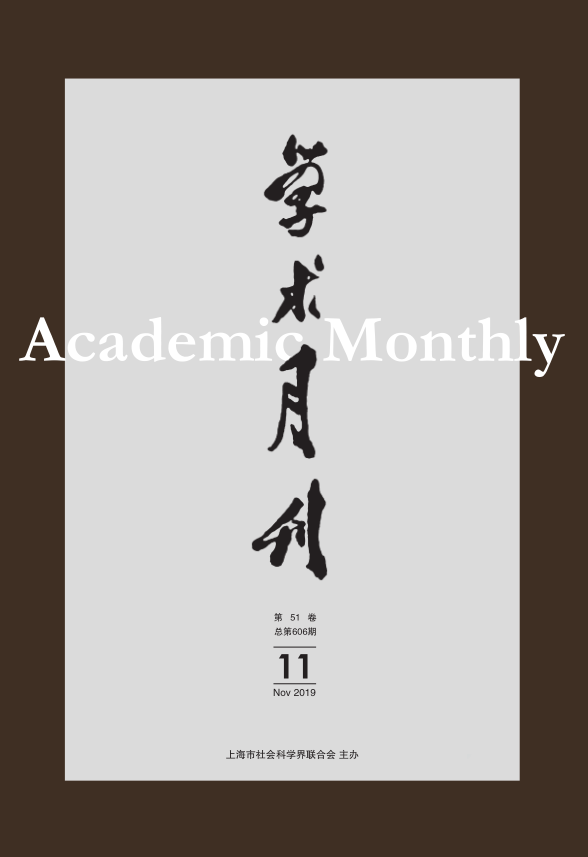Citation:
Xudong HOU. How an Event Was Produced[J]. Academic Monthly, 2019, 51(11): 158-178.

How an Event Was Produced
-
Abstract
Through the Court Dairies of the Daoguang period, which is much more close to one of the original historical sites, we could see how the rich court affairs between 1838 and 1842 documented in it were selected and compiled as the lean narratives tabbed as the Opium War eventually by taking the Court Dairies of the intercalary month of 1832(Sep.) as a mirror. We will also make clear how the ruling group’s efforts finally has been transformed into an epoch-making event through a series steps from scattered and trivial matters on Sino-British battles due to opium trades kept in archives, then to the classified affairs (Barbarian matters) compiled secretly in 1850’s under Xianfeng’s decree, and to an event, by returning to the past along time sequence and close to one of the historical sites as much as possible. Comparing to Qing Empire’s own event-producing mechanism, we could distinguish how those contemporaries’ experiences, the recalling from people afterwards, and the narratives coming from later generations and outsiders combine together, how the contemporaries fall into the victim of aphasia finally, how the later generations dominate the voices of historical narratives, how the event was made depending on contemporaries experiences, how the significances has been added, distorted, and reduced interrelatedly and constantly, and how the event becomes a kind of hindrance for posterity if we want to return to the original historical site after the production of the event as a story. Understanding all of these, we could rediscover the history of these years from more diverse perspectives, and know much about the implications and limitations of the history of events as a way of thinking.
-

-
References
-
Access
-
-
[1]
. . Academic Monthly,
2017, 49(09): 131-144.
-
[2]
Xuequan PANG
. Reconstruction of the Daily Life Experience World. Academic Monthly,
2021, 53(1): 23-34.
-
[3]
Jianbo ZHANG
, Yucheng SANG
. An Academic History of the War and State Building. Academic Monthly,
2022, 54(7): 93-106.
-
[4]
ZHANG Zhenguo
. A Study on Daofu Asking for Instructions and Daily Government Affairs in the Qing Dynasty— Also on Instructions Writing and Its Characteristics. Academic Monthly,
2023, 55(5): 202-216.
-
[5]
TAO Fuwen
. The Memory Field of Historical Criminal Evidence:Military Songs and Japan’s War Memory. Academic Monthly,
2024, 56(2): 175-186.
-
[6]
. . Academic Monthly,
2016, 48(03): 120-127.
-
[7]
. . Academic Monthly,
2016, 48(09): 110-124.
-
[8]
. . Academic Monthly,
2016, 48(10): 109-122.
-
[9]
Jian XU
. Rethinking Triangle-rimed Animal-motif Mirrors: From Antiquarianism, Material History to Historical Archaeology. Academic Monthly,
2022, 54(3): 193-200.
-
[10]
Chen Xiaoming
. . Academic Monthly,
2018, 50(5): 111-127.
-
[11]
Luming QIU
. Event, Process and Political Culture. Academic Monthly,
2019, 51(10): 160-171.
-
[12]
Jinlong XIAO
. A Glimpse into the Trend of Western Current Event Theory. Academic Monthly,
2021, 53(10): 154-161.
-
[13]
. . Academic Monthly,
2017, 49(11): 150-184.
-
[14]
Xiaoyu LI
. How Do Images “Serve the History”. Academic Monthly,
2022, 54(12): 153-164.
-
[15]
Guorong YANG
. “Affair” and “History”. Academic Monthly,
2019, 51(1): 11-23.
-
[16]
Jiyi GAO
, Xin’gui ZENG
. A Study of the Picture of “Zhuan Yao Fang” Annotated by Zheng Xuan in YI Li. Academic Monthly,
2023, 55(1): 173-190.
-
[17]
Haifeng JING
. Classics: From Studies to History. Academic Monthly,
2019, 51(11): 5-14.
-
[18]
. . Academic Monthly,
2017, 49(12): 134-143.
-
[19]
YI Chengzhi, DU Yiling, ZHANG Xiang
. Why Public Catastrophic Events “Re-occur”—— A Theoretical Perspective based on Crisis Learning. Academic Monthly,
2023, 55(10): 88-98.
-
[20]
. . Academic Monthly,
2016, 48(10): 77-90.
-
-



 沪公网安备 31010102003103号
沪公网安备 31010102003103号 DownLoad:
DownLoad: